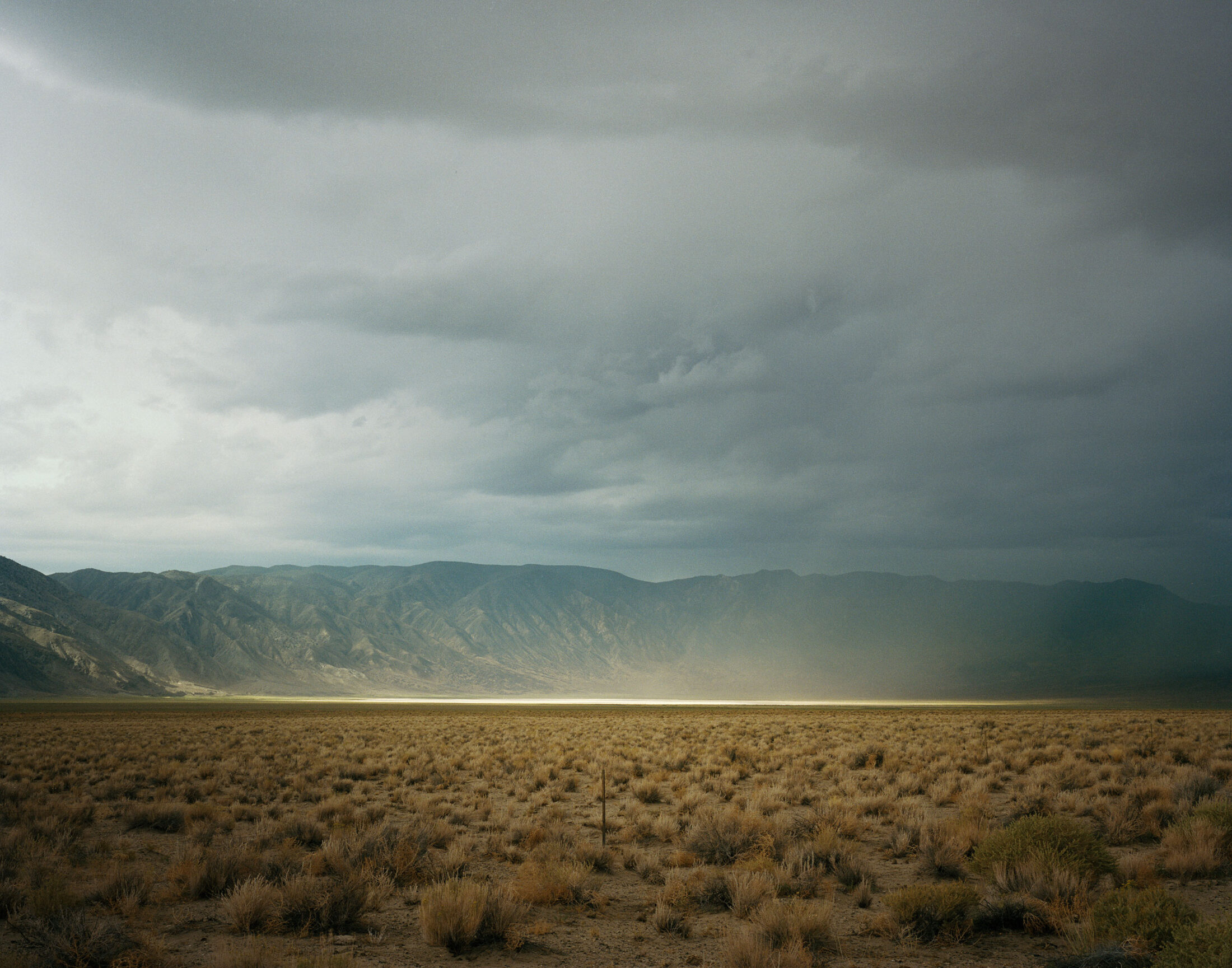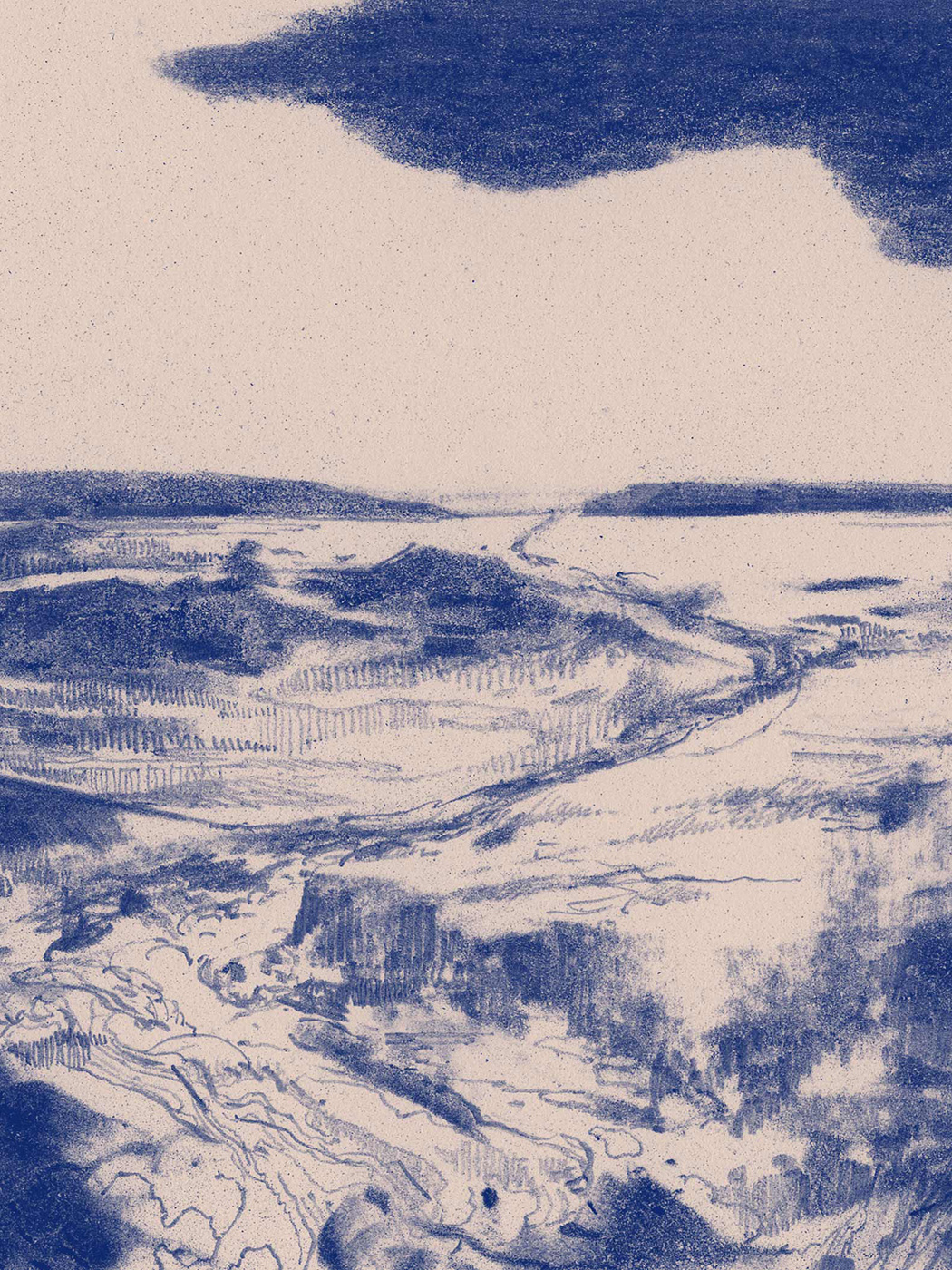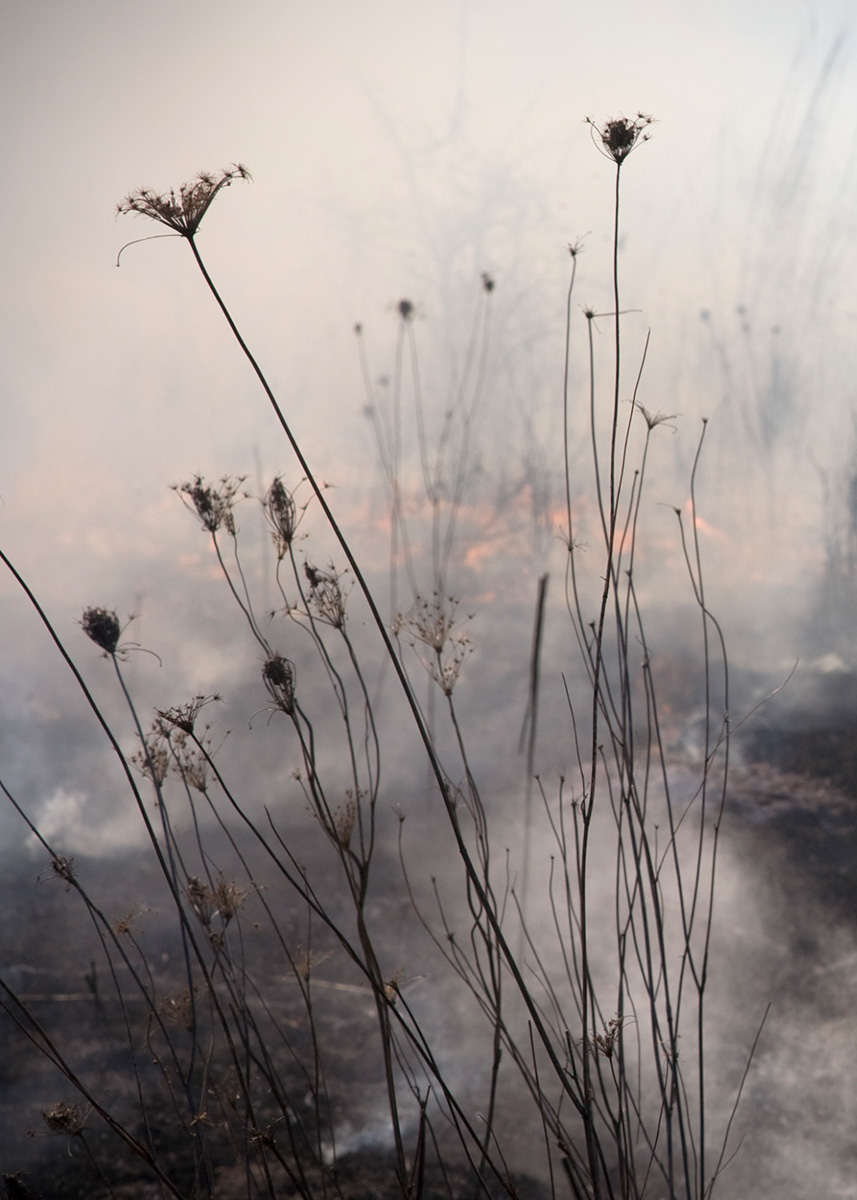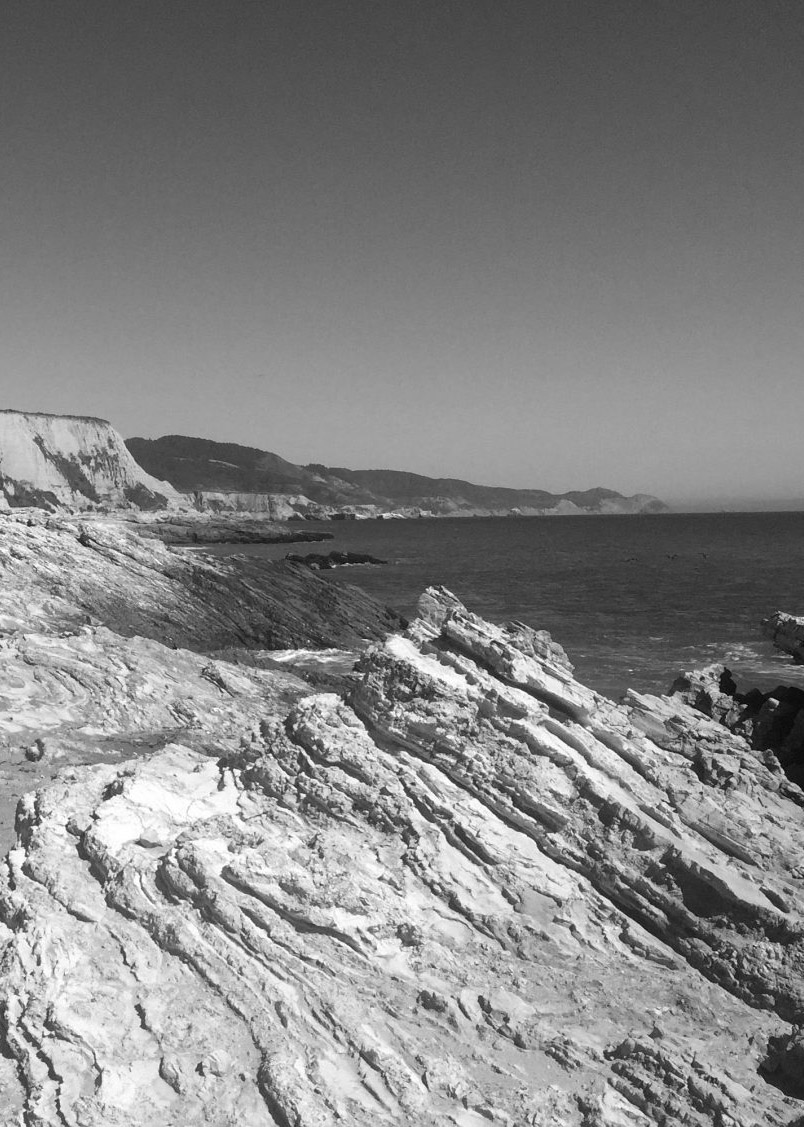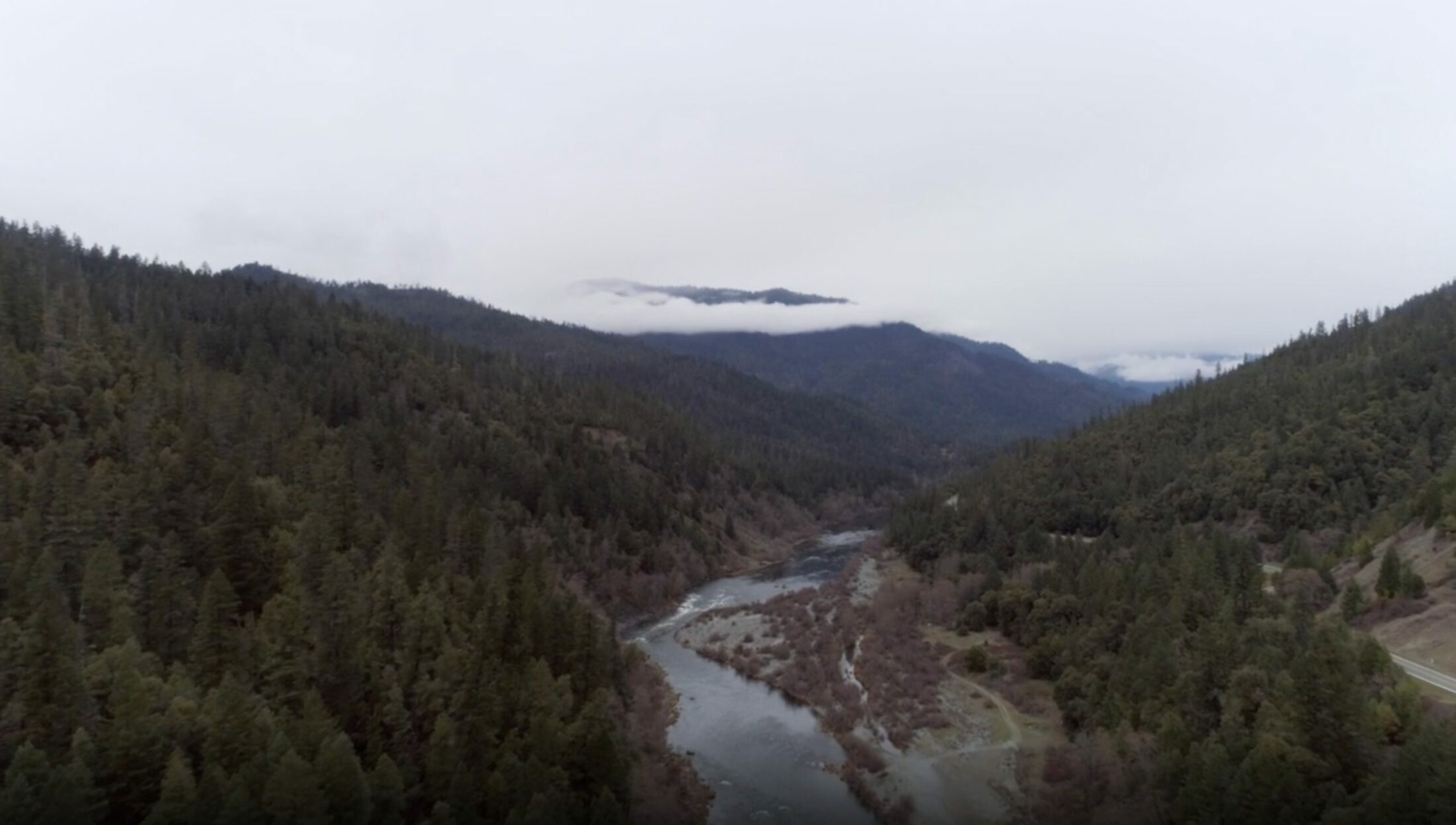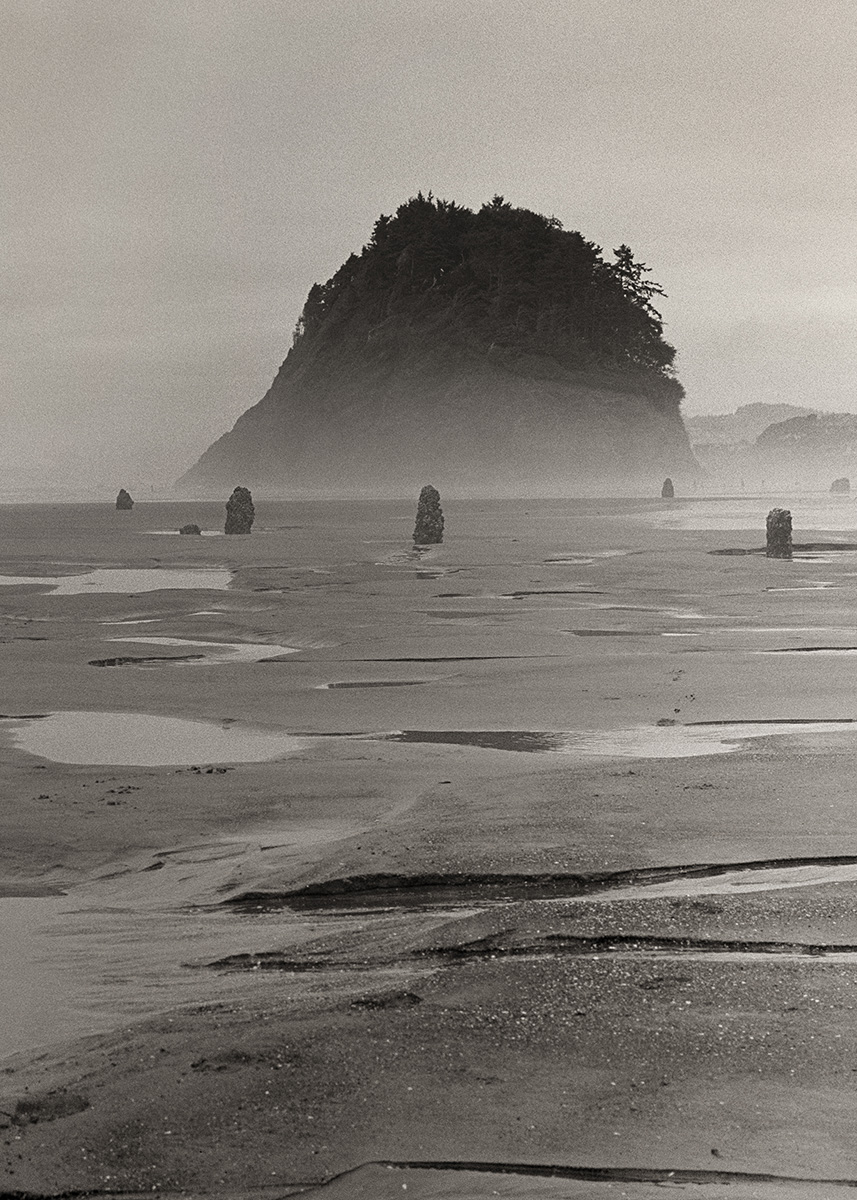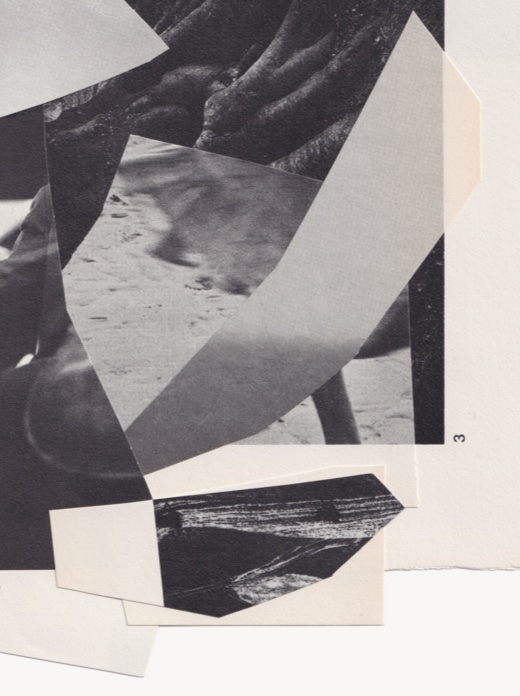Maya Pace is from the redwoods of Northern California and grew up amongst a group of people dedicated to community and service. She is the Curriculum Director at Trust Labs, where she designs and facilitates workshops on the adaptive challenges of belonging and conflict, and offers leadership development workshops for people working on issues ranging from child welfare and gender-based violence to climate change. She was the founding Chief Program Officer of Lead for America, an organization that equips young people to serve their hometowns; and with support from Harvard, she traveled across the US, speaking with people affected by climate change about how natural disasters shape their relationship to place and belonging. Maya orients her work around the question: How do we live well together?
Young Suh is a professor of art at UC Davis. His photographic work often deals with the complicated nature of human involvement in managing natural resources and the shifting concepts of nature in contemporary society. His projects include Instant Traveler and Wildfires, and most recently, Let Burn, a photo and video series on controlled fires. His photography has appeared in solo exhibitions in the US and Korea, and also in numerous group exhibitions, including “The Collector’s Guide to New Art Photography” at Chelsea Art Museum (New York).
Writer and community practitioner Maya Pace awakens to how California’s essential nature, dry, scorched, renewed by flame, has been repressed for centuries by our ideals of paradise.
I.
In 2002, the town council of Albion in Mendocino County, California, heard a proposal to pull fresh water from the Gualala and Albion Rivers, store it in large inflatable bags, and float those bags down the coastline to replenish San Diego’s nearly dry water table. Albion is defined by stark coastlines and thick forest. Nestled in the north of California (Mendocino County borders the south end of Humboldt County), Albion is rich in natural resources. I am aware as I write “natural resources”—a genre of things that are only valuable when they are being used (which often means used up)—that this delimits the purpose of the trees, the water, the people, within a sort of utility complex. Indeed, the water bag proposal tapped into a long-standing frame through which Americans have approached water: use it or lose it. That is, if Albion wasn’t using its abundance of fresh water, it might as well move it somewhere that would.
Those who want to make use of Northern California’s “surplus” of water, as though water were a commodity, have long set their sights on Mendocino and Humboldt Counties. Across the state, water is siphoned through huge, mechanized contraptions from the seemingly water-rich areas to drier parts of the state. Central California—the breadbasket of the world—generates massive quantities of produce that are then shipped to the rest of the country, relying on something called the California State Water Project (CSWP) to irrigate this production. The CSWP is what they call “an engineering marvel,” pumping water through a stretch of over seven hundred miles of irrigation mechanisms, at times hoisting water 1,926 feet vertically over a mountain range to bring water from the northeast to the arid center and south of California. It is the largest consumer of energy in the state. A third of Southern California’s water is pulled from the Colorado River via a different marvel: the Colorado River Aqueduct (242 miles, 1,600 feet of elevation gain). These “marvels” keep us (yes, likely you too) fed and clean and hydrated, and free from ever having to think about the contortion of pipes that preserve the illusion of verdant green.
California has been built on an ideal of paradise: That anything can happen here, that we can defy the laws of gravity and water flow to create heaven on earth. That we can ignore the real constraints of dry places. That the particularities of “here” are just technical challenges waiting for the right innovation. Despite earthquakes and fires and drought, this place keeps getting built up as if we could build anywhere, undergirded by a tenuous scaffolding of water moving against the current’s instinctual pull.
The people of Albion—many of whom refer to themselves as citizens of “Albion Nation” given their propensity for living vibrantly, defiantly, and radically in very remote conditions—are not known for their desire to maximize, nor are they known for their willingness to negotiate with outside businessmen. Especially not after what they’ve seen happening to water under contract in California. So when Ric Davidge, the so-called “Water Czar” of Alaska, brought this water bag proposal to the Albion council in 2002, he was met with intense resistance. In one article from the time, a local was reported as saying, “The community is outraged, when they’re finished laughing.” Backed by investments from Saudi and Japanese investors, this proposal marked Albion as wealthy in this one thing—water. Water bags have been used in other places: transporting water from Turkey to Cyprus, for instance. But this wasn’t other places, this was Albion. Over the course of a year, after many presentations before the town council and the water board, the proposal was shut down. Albion remains bag free.
In my early years, my family lived in Mendocino, a fifteen-minute drive from Albion. Then we moved to a different sort of renegade community—an off-the-grid, income-sharing, natural-building enclave. Water was also a fixation here. Sometimes, there was too much. Other times, not enough. When it rained, the phone line would go out and we would trudge the mile up to the ridge. There, we’d check on our jerry-rigged satellite phone and trace the cord back down to the common house to find the glitch that had caused the short. Or, the power would go out and we’d kick the generators on. We had to think about where to build our wells, how to design our greywater system to preserve water, how to filter our runoff so that it was safe enough to put in the garden. Water was a limit, something to push up against, something to use or leave alone.
After my family moved off that land, I began to grow tired of California. I left at eighteen, thinking that the “real work” was elsewhere, refusing to let this place use me up just like it used up everything else. My resources were better allocated elsewhere, I thought. Redirect to maximize use.
When the rain began to dwindle, even in the north, my second mom (my commune mom) started a blackboard that she keeps on her kitchen wall. She tracks the amount of rain we get each year and keeps a visual archive of years past. We’re at 36.6 inches this year, a stark increase from 13.7 in 2020. It’s still not enough.
The reality with the bag proposal, of course, is that San Diego never had enough water for the millions of people living there. It still doesn’t. Now we don’t either.
II.
It was fire, not water, that brought me home. Unlike water, fire was deemed useless by Spanish missionaries and other white settlers when they first arrived in the Northern California region and began clearing the land of its dense forest for lumber and grazing. They feared it. And so, despite the fact that fire had always been a part of Northern California’s landscape, despite the fact that the native Pomo and Miwok who lived in the region had been using controlled burns to work with this ecology for millennia—including in densely populated areas of Lake, Mendocino, and Sonoma Counties—the newcomers to California repressed all fire. The underbrush grew without flames to cleanse it. Forests were cut down for timber and grazing. Then the droughts came, and the underbrush dried up, waiting for a spark.
Like revelation, lightning kissed the dry brush in the northwestern region of California, reminding us of what we had tried to forget. Like revelation, thirty-eight fires began to burn on August 17, 2020. In dryer lands, fire brought us to our knees, demanding attention and a recategorization. By September 9, blue had fled the scene. Smoke stretched beyond the reach of the flames, and I woke to skies eyelid red, light filtering through the smoke-skin that covered us, like God had closed their eyes.
Standing on my porch, staring up and around at the haze, I could barely believe I was awake. Nothing about the experience translated beyond the porch I stood on. No one I spoke with on Zoom calls that day who looked out their window and could still see blue around them really knew. I tried to explain, “Look, can you see? Can you see?” Yes, they could see through my grainy computer camera, but seeing didn’t seem to mean anything. They didn’t know what it was like to be there, to be here.
Even now, I fail to re-enter the revelation that came on scorched earth: That our conceptions of utility were all wrong. That there was no measure for fire—this thing relegated to usefulness only when carefully contained by engine, by iron, by wax—once it became unfettered. That fire threatened the very homes and fields built in our mad dash to fulfill illusions of paradise. That fire reminded us we’d gotten it all wrong again. I was scared. I still am. I was also alive. It took thirty-eight fires to soften my assumption that California didn’t need me (and that I didn’t need it). I’m a slow burn.
III.
I hadn’t realized how much I thought about water until I went to Utah, where people think and talk about water even more than I do. I was in Utah for many reasons. In one version of the story, I went because I got a grant to learn how natural disasters—drought, flood, fire—shape peoples’ relationship to place. In another version of the story, the fires of 2020 shook me out of myself and my place, and I was desperate to learn how others were living through the disorientation that comes when the land you love becomes unrecognizable. In a third, this was my newest attempt at usefulness—could I perhaps find some previously unidentified link between divinity and disaster and place, weaving together my areas of work and interest, that could offer something useful to the “field?” Like soil worn by water, the premise slowly eroded out of view—the people and places stayed.
So, I was in Utah and driving through the desert, the scorched hills of California, fires long since put out, at my back. Blue sky, no smoke. I kept a lookout for the telltale signs of water sources: collections of houses, larger trees and plants, a glossy sheen in the distance. Everywhere I turned in Utah, people were talking about water.
It was a strangely comfortable feeling. A known one. Reminded me of home and short showers and the constant question, when will it rain next? I missed this feeling; the sense that I ought to wonder. The remembering that I can’t change, or have any immediate impact over, the answer to this question. But it matters. This question—when will it rain next?—really matters, more than most other questions I am asking these days. The answer matters most of all. It ought to shape everything I do with my day, how I move, whether I exert myself or not, whether I bathe or not, whether I drive or not. It ought to shape everything we all do. It almost never does.
But Utah is more fixated on water than even I am used to. Perhaps because it is so much drier. I woke up to chapped lips. I went to bed with chapped lips coated in a friend’s homemade lip balm. My skin was flakier than usual, and I was sucking down nearly a gallon of water a day.
The Colorado River has shaped the landscape and economies of seven states, including both Utah and California. It no longer reaches the sea, not because it no longer wants to, but because we have built cities and food systems that now rely on its water to the extent that we would die if we gave that water back tomorrow. We might still. The Colorado River Compact—the agreement made in 1922 between representatives of Arizona, California, Colorado, Nevada, New Mexico, Utah, and Wyoming—determined how the river’s water would be allocated: 7.5 million acre-feet of water for each of the river’s two basins. Despite dwindling water supplies, this compact remains in use. There is no plan to figure out what happens next. New developments continue to be built in the region, amid water laws that follow a “use-it-or-lose-it” doctrine, prioritizing human use over conservation. Though there are now some attempts to rectify this, the problem persists. Our technology and our dreaming and our hunger to test our own limits is masking the reality of finitude. It’s really only now, two years after my first trip through the state, a year after my project, that I’m slowly piecing together how Utah and my home region of Mendocino County are entangled. Without the drying Colorado River, which supplies 50 percent of the water to San Diego County, there would be no need for giant floating bags to traverse the wild coast from Mendocino County to Southern California. Much of this water irrigates crops in Central and Southern California, or golf courses and green lawns, keeping us fed, though not efficiently, and maintaining the facade that we are impervious to the land around us. The crust of cryptobiotic earth that stretches across Utah is too thin to pretend to be anything other than dry; green grass won’t make it more of a paradise. It is already full of life.
We have created a future that will ask us if we love it enough to live in it.
As we drive into the hills outside of Elmo, Utah, Jex tells me more about water. Coming from the scorched land to the west, I wanted to understand how ranchers here—who must engage dry earth all the time—love their places amid scarcity and drought. A friend connected me to Jex, and I drove to his town of Elmo, Utah, catching stares as I rode up in an unfamiliar car. Out beyond the town of four hundred, his cattle roam the hills. On the way to see them, Jex points up to the mountain on our right. All of the water he uses in his ranching comes from reservoirs that are nestled up there, he tells me. The reservoirs should provide enough water for the year and farmers pay for their shares when they buy the land. On drought years, the shares reduce, and farmers tighten their belts.
I am warm, sucking in air amid the groggy heat. Two of Jex’s kids babble in the backseat, the baby red-cheeked and damp with sweat. His daughter sings softly. Most years, Jex tells me, he loses money on his cattle. The cost of raising them, even on public land where ranchers pay nearly nothing, outweighs the price they make at market. Sweating in the big square car, we drive through the scrubby brush that covers the light brown soil in a patchy beard. About 42 percent of Utah is public land, so nearly all of what I’m looking at is managed by the Bureau of Land Management, often with very little oversight. “Why do you keep ranching, then?” I say.
Jex looks at me, laughs, says his wife wonders the same thing. “We do it because it’s our way of life,” he says. Only later do I remember that I, too, want to raise life for the sake of life, to walk the earth for the sake of feeling feet against soil. “There’s a perspective that you gain when you’re working with animals,” Jex says. “People who are close to their food source are different somehow. There’s a humility, there’s an understanding of reality.” Jex is clear-eyed about the heat of the desert, takes up the allotted water, knows that it is a shared resource. He is willing to tolerate the heat. He doesn’t pretend otherwise.
After we see the cows, he takes me to rotate the pigs. Jex is a self-taught regenerative rancher; he rotates his pigs to ensure that the grass has a chance to recover between each exposure to cloven hoofs. He shows me how lush his grass is, jokes about how much nicer it is than that of his brother, who grazes his pigs one lot over. Jex’s son gets me on the ATV and we shift the movable fence, calling softly to the pigs as we go. I’m not dressed for the occasion—my shoes sink into the soft earth, manure and mud and flecks of grass creeping up to cover my feet—but I wave off their concerns. I don’t want to give attention to anything that would remind me I’m not of this place. I’m enthralled, by the green, by the sounds of the pigs, by the song Jex’s daughter is humming, by Jex’s willingness to do something different, even when everyone around him thought it was useless.
Jex moved back to this land because it was special to him, but to live here is to live here. To attend to the scarceness of the water, the dryness of the land. To experiment with ranching practices that take into account the scarcity of resources. This place is particular. The water fluctuates, Jex adapts. He prays, he rotates his pigs, he rations the water. He siphons everything through this land, this body. He lives here; he marks the land, and the land marks him. There is no pretense of dominance. Jex didn’t make the decisions about where the bulk of this place’s water went, but he does take responsibility for how to live amid the dust today. Perhaps what I am saying is simple. We exist in context, even when we pretend we don’t.
Jex’s daughter looks at my watch. She worries it will get wet in the sprinklers. “It’s waterproof,” I say. She touches the face with hands she used to wipe manure off of her pants. I want to pull my arm away, protect it from the shit and the examination, but she’s quicker.
Jex invites me to stay for dinner. He makes the best pork chops, he says. If I didn’t need to leave before sunset so I could find my way back to my motel with my busted headlights, I would break my ten-year veganism to eat one. Sometimes we must set fire to our purity in the name of intimacy. After I say goodbye, I rub hand sanitizer on my shit-covered watch under the line of sight below my steering wheel. I don’t want Jex’s daughter to see. Looking at my clean watch, I wonder what I’ve done, wonder if I have erased something of the truth of our time together.
I pull over for a moment to watch the desert catch fire as the sun sets during the drive back to Moab. Out here, it’s easy to feel like I don’t matter at all, just another mark on the endless landscape. The pressing weight of sky crushes me into singularity. Out here, every mark on the landscape carries undue weight; my eyes zoom in, heralding the tree, the cow, the road, as if each mattered more than all the earth next to it. As if I could separate the tree, the cow, the road from the unending brown and each would be more useful in their isolation. That can’t be true. The last bit of mud on my watch tells me that the opposite of utility is Jex’s feet, still walking, on land drier now than it has ever been.
A week after my time with Jex I’m at a water conference. I spend the day listening to presentations while trying to prepare for a talk on spiritual care amid environmental change that I didn’t know I was going to give until the night before. A public official discusses the sorts of policy interventions they’ve been considering to deal with the water crisis in Utah. Ranchers, they say, are using up all of the water. They might try paying ranchers to stop running cattle. It’s an unpopular proposal, he says, but we’ll see what happens.
I think about Jex pouring money into the cattle and land that he loves, praying for rain, praying for his family. I think about how much he stands behind the idea that his cows are helping the earth, the idea that his regenerative farming practices could support the land’s flourishing, the amount of thought and prayer and work he has put into learning his land as she changes. We are never perfectly attuned, but my god he is trying.
I look at this public official and consider his policy, which treats purpose as something that can be traded for cash, as if he could pay Jex enough to make his commitment to his cows, to his land, simply disappear; make the friction between purpose and scarcity simply go away. Who is to say who is right? Which intimacy is better suited to this desert? The distance between the two men is startling in its narrowness. Wide as a canyon carved from millennia of twisting water, now nearly dried up. Yet so close I can see the other side, can forget that there is no water without canyon, no canyon without water.
IV.
Sometime between leaving California and meeting Jex, I sit on the edge of the Colorado River canyon. Part way down the red walls, a thin white line runs horizontally between orange rock, evidence of some god child with a piece of chalk running, laughing, drawing on the walls of the earth. That is the last great extinction—all of the beings that lived and died, memorialized in this tiny seam. The bones of all the creatures mourned and unmourned before us, baked into solid earth, dwarfed by rock time above and below. This piece of earth is called the Paradox Formation, and I see our future exposed. I can’t shake this image, even now, nearly two years after I first saw it.
The line of sediment slopes down slightly, like god-child got tired, dropped her arm. This downward curve is partially a result of salt extraction by a company called Intrepid Inc. To collect potash, which is a derivative of salt, Intrepid pumps water into the salt table, pumps out the solution, dyes it blue so that it evaporates more quickly, and collects the remaining salt for production. The salt is residue from the ocean that existed here millions of years ago; now there is only desert. Without the brace of the salt, the earth is sinking.
I peer down to the very bottom of the canyon and see the water that doesn’t reach the sea anymore. I wonder if the ocean misses this slow, sluggish river, if the sea ever thought of the kiss of brine and sweetness as useless. If the cliffs above the receding water line miss the river’s friction. If either of them think the way we are using the river is worth her death.
Staring then at the thin white line—our ancestors—everything, all of it, felt suddenly clear. Eventually, we’ll be only a chalky mark. All of our utility, all of our yearning, all of our excess, our road trips, our grant proposals, our conversations, the leaving and the revelation and the living will be only this. What freedom. Perched on the edge of the canyon wall, my legs dangle in air. I swing them, testing my ability to hold steady in the face of gravity’s seduction and my future shape. Some part of me wonders if it would be more efficient, painless, to just give myself over to the rock now, accept that we are in the midst of creating another white line, avoid the pain of living through it. That would be efficient, wouldn’t it? But I want to feel brine and sweetness, the kiss of water on rock, built-up underbrush lit for the first time in centuries. I want shit on my watch. To stay alive, I must keep my distance, must live the life that is mine, feet on ground, smoke on skin.
V.
In March 2014, stewards of the Colorado River—including partners from the US and Mexican governments—released an experimental “pulse flow” from the Morales Dam surging water through the dry Colorado River Delta in Mexico, allowing the river to momentarily reach the sea for the first time in twelve years. In a video capturing the momentous day, people pop champagne, take pictures, and laugh and laugh. “We were there to witness when they opened the gates and the river was alive,” says one onlooker. The river, alive, less fettered, flowing again. The website associated with the film reminds me that “the Colorado River is one of the hardest-working and most-loved rivers. Flowing for more than six million years, it is the lifeblood of the American West.”
My project is over; I ended it early. My utility complex got the best of me. The fantasy of a road trip full of revelation and connection and creativity got lost in the murk as I berated myself for my own futility; each day I would doubt—so many times a day—whether what I was doing was worthwhile. There was no way to track, to measure, to observe, whether I was being used well. I was just moving. At some point on a drive between Moab and Salt Lake City I realized that I’d come to think of myself like the West thinks of water and fire: that it wasn’t enough to just exist, to just run my course to the sea, and let my fires burn. I realized that I had learned to approach my own self as something to be used, or used up. As something that could—and should—be exported anywhere that it was needed. As something independent of place. I doused my wildfires, I ignored my drought, I pumped my water to where it could create a fantasy of paradise. The road is confronting in that way. There was, ultimately, no moment of release where I thought, “ah yes, this is what all this was for.” There were only moments with people, in the places they call home, looking, talking. Many hours on the road doubting. Writing this article and that one. Holiday phone calls from one elder I met, email chains sharing updates and pictures with several others. How do I measure all of this? Was it enough?
After months of trying to contort myself to fit some version of success that I couldn’t actually achieve, my riverbed dry and dusty, I stopped traveling; tried to stop contorting. The stopping felt sudden. How would I live now? Part of me missed the ache of the road. Nearly two years later, returning to the site of these stories feels clunky, unsteady. I am not quite sure of the route. I keep looking up and around to see if I’m on the right track of remembering what used to be so clear. I wonder if the water that briefly rushed from the Morales Dam ever worried whether she’d forgotten the way.
Twenty-three years after Ric Davidge the Water Czar, five years after that day on my porch where my vision cleared with smoke, eighteen months after the canyon ledge, eight months after I moved back home to California, I text my parents to clarify the details of the water bags and to see if they know of any articles where I can learn more. I tell them I’m trying to learn more about the water bag story. I call the protestors “iconic.” I am met with a deluge of responses: Here’s a link to get you started. Not sure how detailed you are needing. Don’t forget the protests at the [bodega] head and the land-based issues there, if you are looking for iconic … just saying. Or Julia Butterfly. Or Redwood Summer in Fort Bragg. Judi Bari also iconic. If you are still looking for material, might want to check with Linda. Coho [salmon] are coming back up the rivers for first time in years based on the work she and others have done. Truly amazing.
I’m specifically thinking about water, I reply. Good, my dad responds. Talk to Linda. He sends me some links to get me started, and I find myself in the midst of a story of water, resistance, and a group of people who are clear-eyed at the cost of paradise.
I fell back in love with California when her paradise burned. She was no longer some picturesque lover. She never had been. Only then could I begin to take seriously what it meant to be with her. And it’s only now, after so many miles of road, so many hours of listening to how others love the all of their home—only now that I am back, living again in this place that mirrors back the parts of myself I have tried to discard, that I feel what it means to live with her. She is what she has always been. There has always been friction and heat. There has always been fire. There has always been desert. There has always been pure water, rushing between redwoods, pushing against canyon walls. There has always been freedom in containment. The pursuit of limitlessness has always meant our death.
After a decade of living somewhere else, I’m sitting now on my porch, looking out at that same sea that no longer greets the Colorado River. I’m wondering whether I’ll be able to stave off my utility complex for long enough to let myself fall so in love with this place that I, too, see all of it: the fire, the drought, the flood, the water hoarders of San Diego (I’m kidding!), the Colorado River, my own body, the memory of Jex’s feet on brown earth, the coho salmon, the stinging nettles, the perfectly warm weather, the outraged and laughing water bag activists, the shit, and the thin line of white—our past, and our future—that certainly stretches from the canyon in Utah all the way to the bedrock of California. We have created a future that will ask us if we love it enough to live in it. To live here, in this place, which is not paradise and has always been whole. I can taste it, that sort of love. There is no glory. This is it. An intimacy bound, feet first, to the damp and scorched earth.
